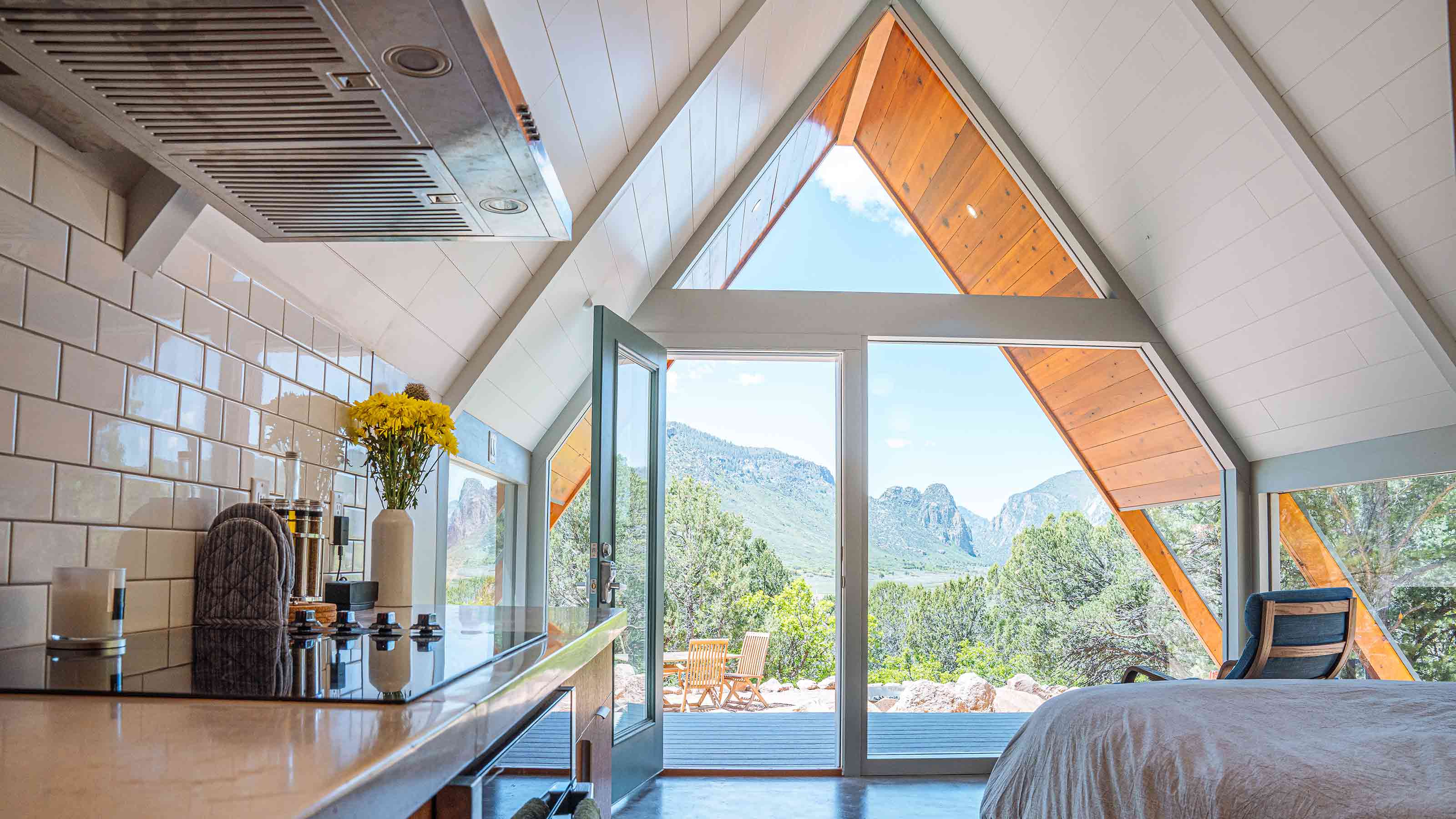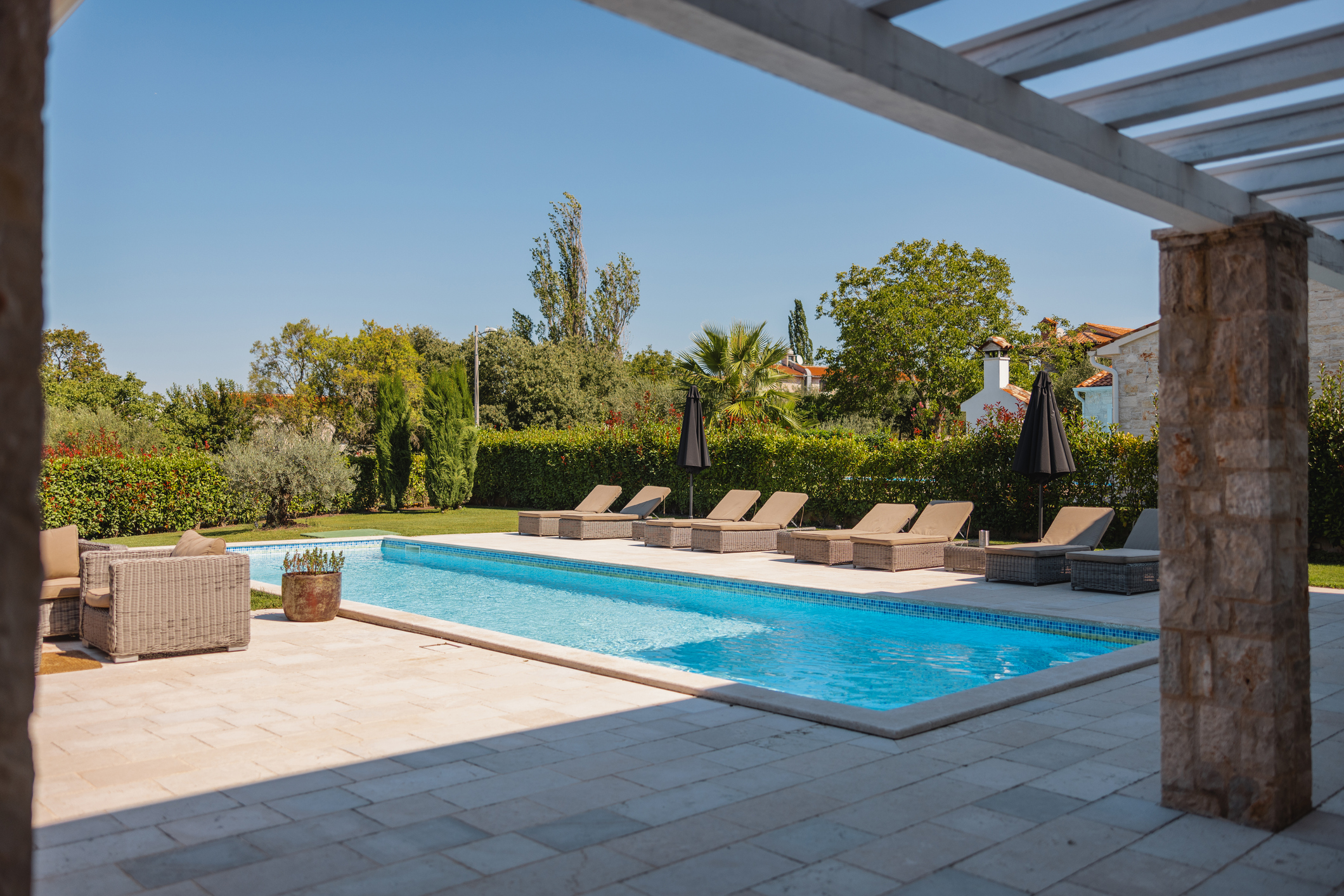Should You Buy a Vacation Home?
If you vacation to a beloved destination again and again, purchasing a home there may be a smart move — but don’t overlook the costs and effort that go into it.

Owning a vacation home can be an enticing prospect.
When you shift from tourist to homeowner in a location you love, it’s easier to visit whenever you wish, and the home provides a getaway to create happy memories with family and friends. Plus, because you can store supplies and other belongings at your vacation home, you may not have to bring much along with you when you stay there.
But owning a second home is a big responsibility that requires careful planning. Here’s what to evaluate as you decide whether it’s the right choice for you — and how to get financing if you move forward with a purchase.

Sign up for Kiplinger’s Free E-Newsletters
Profit and prosper with the best of expert advice on investing, taxes, retirement, personal finance and more - straight to your e-mail.
Profit and prosper with the best of expert advice - straight to your e-mail.
Are you ready to buy a vacation home?
According to a 2024 study from LendingTree, an online loan marketplace, most owners of vacation homes plan to use their home as many as seven times per year.
Tally up an estimate of how much time you anticipate spending at your vacation home, and consider how many stays would make the purchase worthwhile for you. You may want to rent it out while you’re not there to help cover the costs of owning it (read on for more on rentals).
If you’ve been to the area where you’re thinking of buying a home only for short periods as a vacationer, visit it during the times of the year you expect to be there as a homeowner. You may find that some of the dining options, entertainment venues or other amenities you enjoy are not available during off-peak times, or that it’s more crowded than you prefer during the most popular seasons. Talk to locals about living in the area.
Gauge the expenses. When it comes to determining your financial readiness, account for not just the home purchase but also the ongoing and ancillary expenses. “Oftentimes when we talk to clients, they’re thinking primarily about the mortgage and not necessarily all those ancillary fees,” says Matt Vernon, head of consumer lending for Bank of America. (More on getting a mortgage below.)
Consider the cost of travel between your primary residence and the second home, and try to get an idea of how much you may spend on maintenance. Vacation homes — especially those in coastal areas — tend to require a fair amount of upkeep. So it’s wise to maintain a dedicated emergency fund for unexpected repairs. A common guideline is to set aside an amount equal to 1% to 2% of your property’s value. And prepare for some the initial costs, such as for movers and expenses to furnish and decorate the home.

Evaluate insurance needs. Whether you use your vacation home regularly or sparingly, you’ll need to have a homeowners insurance policy for it. Coverage is often more costly than for a primary home because vacation homes tend to sit empty for longer periods, putting them at higher risk for claims. Also, you may pay more if your second home is far from emergency services or otherwise difficult for first responders to access (if reaching it requires driving up a windy, steep, narrow or unpaved mountain road, for instance).
It’s important to be aware of climate risk as natural disasters grow more intense. You can get a sense of the risk in areas where you’re thinking of buying a vacation home with the Federal Emergency Management Agency’s Natural Risk Index If your home is in an area with a high risk of flooding and you have a federally backed mortgage, you’re required to have flood insurance. The average cost of a flood insurance policy through the National Flood Insurance Program is about $1,000 per year. However, the cost can vary widely.
Plus, in many coastal states, homeowners insurance policies include separate deductibles for hurricane damage or any damage resulting from wind or hail. Typically, these deductibles are a percentage of the home’s insured value — often about 1% to 5%, although they may run as high as 10%.
Get a handle on taxes. Familiarize yourself with property taxes in the area where you’re thinking of buying a home, as well as any proposed legislation involving property tax. If you itemize on your tax return, you can deduct property taxes on your vacation home, but the total amount of state and local taxes you can deduct on both your primary and vacation home is capped at $10,000. Depending on the location, your primary residence may account for most or all of the amount of property taxes you can deduct.
If you decide to take out a mortgage, you can deduct interest on up to $750,000 of debt secured by your primary and vacation homes. (If you purchased your homes before December 16, 2017, you can deduct the interest on up to $1 million of debt).
Financing a vacation home
The overall decline in mortgage rates over the past year has been a welcome shift for buyers who want to finance a home purchase. But keep in mind that mortgage rates on a second home run slightly higher than they do for primary homes because from the lender’s perspective, the additional financial burden is a higher risk.
Generally, the same types of mortgages are available for a second home as for a primary residence. You can get a fixed-term loan, such as a 15- or 30-year mortgage, and an adjustable-rate mortgage may be an option as well. As with getting a mortgage for a primary home, your financial qualifications have the most direct impact on how favorable your interest rate will be. Lenders consider factors including your credit score, debt-to-income ratio and down payment, and the standards are usually more rigorous than with a primary-home purchase.
The lender will likely ask you to make a larger down payment than it would if you were financing a primary residence. For example, Chase Bank requires a down payment of at least 10% for a second home, while a primary home may require a down payment as low as 3%.
“We want to make sure that the additional financial pressure is being met,” says Max Koziol, national purchase director for Chase Bank. Bank of America generally likes to see 30% or more for a second home’s down payment, says Vernon. “Inherently, the risk is higher with a second home, so lenders will take that into account.”
Most lenders require a credit score of 680 or more, and an ideal debt-to-income ratio is typically below 30%. Lenders want to see stable income, too. “We need to see that the borrower has the ability to repay not only their primary loan, but also that of the second home,” says Vernon. You might consider waiting until your primary home mortgage is either paid off or has a low amount remaining to help ensure that you can comfortably afford the second home.
An online mortgage calculator can help you estimate your monthly payment, including costs for homeowners insurance and property taxes. Try Bankrate’s calculator.

Tapping equity on your first home. If you’ve paid off a substantial portion of the mortgage on your primary home, taking out a home equity line of credit (HELOC) or home equity loan may be a solid strategy to raise cash for your second-home purchase.
“That’s one other option that we see homeowners use, especially those who have very large equity positions in their primary residence and are buying a small house on the coast, for example,” says Vernon.
HELOCs and home equity loans are usually available at relatively low interest rates because they are secured by your home — but they can also put your primary home at risk if you don’t keep up with payments. If you have a good credit score (usually 740 or above), that will help you qualify for the lowest rates.
HELOCs allow homeowners to borrow from their home equity during the draw period, which typically lasts for up to 10 years. If you owe money on the HELOC at the end of the draw period, you enter a repayment period — typically up to 20 years — during which you pay principal and interest at prevailing rates.
By the time the repayment period starts, homeowners with a significant balance and sufficient equity may choose to refinance their mortgage and add the home equity debt to the new mortgage. Or, if the timing works out, you could sell your primary residence before the start of the repayment period, use the proceeds to pay the balance, and retire in your second home.
Alternatively, some people use a cash-out refinance on their primary home to help fund a second-home purchase, says Koziol. If mortgage rates fall further, refinancing may make sense, depending on your mortgage’s current interest rate.
Renting out your vacation home
You might be considering renting out your vacation home during times that it would otherwise be vacant, as it can bring in welcome income to offset ownership costs. But before you offer it up to renters, make sure that you won’t run afoul of the locality’s rules. Some homeowners or condo associations disallow short-term rentals, and some may prohibit renters from using facilities such as the pool or gym.
You should also estimate additional expenses you may incur with a rental. If you hire a property manager, you may pay the manager anywhere from 10% to 20% of the property’s monthly income. In addition, maintenance costs could go up if renters cause extra wear and tear on your home, and you’ll likely need to hire a service to clean the home between rentals.

Tax implications. You can rent out your vacation home for up to 14 days a year without paying income tax on the money. The exception applies no matter how much you charge. The IRS provision allowing individuals to exclude short-term temporary income is known as the “Masters Rule” because residents of Augusta, Ga., successfully lobbied for the exemption back in the 1970s so they could rent out their homes during the annual Augusta National Golf Club Masters tournament.
If you rent out your vacation home for more than 14 days in a calendar year, you’ll have to report the income to the IRS and pay tax on it; this income is typically reported on Schedule E of Form 1040. On the bright side, you can deduct a portion of your vacation home’s expenses, such as the cost of mortgage interest, insurance, repairs, maintenance and utilities, as well as additional costs that come with renting, such as for house cleaning, new décor and updates, and property management.
You’ll need to divide the total expenses by the number of days the home is rented compared with the days it is occupied for personal use. For example, if renters occupy the house for 50 days while your family is there for 150, renters account for 25% of the total days the home was used, so you’ll be allowed to deduct 25% of expenses.
And here’s another wrinkle: If you spend more than 14 days a year at your vacation home, or more than 10% of the number of days the home is rented, the IRS considers the home a personal residence. In that case, you can only deduct expenses up to the amount of rental income you’ve received, and you can’t deduct losses. Personal days include days you or a family member is using the house (even if the family member pays rent), along with days you’ve donated use of the house — in a charity auction, for example — or rented it for less than the going rate for your area.
Keep detailed records of both rental and personal use, including receipts for the expenses you incur and a calendar of the days the home is rented out. This will both help you provide accurate information as you prepare your tax return and substantiate your claims if you’re audited.
Note: This item first appeared in Kiplinger Personal Finance Magazine, a monthly, trustworthy source of advice and guidance. Subscribe to help you make more money and keep more of the money you make here.
Related content
Get Kiplinger Today newsletter — free
Profit and prosper with the best of Kiplinger's advice on investing, taxes, retirement, personal finance and much more. Delivered daily. Enter your email in the box and click Sign Me Up.

Emma Patch joined Kiplinger in 2020. She previously interned for Kiplinger's Retirement Report and before that, for a boutique investment firm in New York City. She served as editor-at-large and features editor for Middlebury College's student newspaper, The Campus. She specializes in travel, student debt and a number of other personal finance topics. Born in London, Emma grew up in Connecticut and now lives in Washington, D.C.
-
 Stock Market Today: Trump Retreats, Markets Rejoice
Stock Market Today: Trump Retreats, Markets RejoiceStocks rally, yields soften, the dollar rises, and even beaten-down names enjoy the wages of potential trade peace.
By David Dittman
-
 In Trump’s Economy Should 401(k) Savers 'Set It and Forget It?'
In Trump’s Economy Should 401(k) Savers 'Set It and Forget It?'It’s hard to bury your head in the sand when the markets are volatile. Here’s when it makes sense and when it doesn’t.
By Donna Fuscaldo
-
 I'm 50 and My Home Is Worth $5 Million. Can I Retire Now?
I'm 50 and My Home Is Worth $5 Million. Can I Retire Now?It may be oh-so tempting to cash out your upscale home and leave work for good. But should you? We ask the experts.
By Maurie Backman
-
 Bouncing Back: New Tunes for Millennials Trying to Make It
Bouncing Back: New Tunes for Millennials Trying to Make ItAdele's mournful melodies kick off this generation's financial playlist, but with the right plan, Millennials can finish strong.
By Alvina Lo
-
 What Are AI Agents and What Can They Do for You?
What Are AI Agents and What Can They Do for You?AI agents promise to be the next big thing in artificial intelligence, but what exactly do they do?
By Tom Taulli
-
 Should You Buy an iPhone Now Before Tariffs Hit?
Should You Buy an iPhone Now Before Tariffs Hit?Looming tariffs can make an iPhone purchase seem urgent. Here's what to do if you need another phone but want to save money.
By Laura Gariepy
-
 Here's When a Lack of Credit Card Debt Can Cause You Problems
Here's When a Lack of Credit Card Debt Can Cause You ProblemsUsually, getting a new credit card can be difficult if you have too much card debt, but this bank customer ran into an issue because he had no debt at all.
By H. Dennis Beaver, Esq.
-
 Reminder: The Basics of Using HSA Funds
Reminder: The Basics of Using HSA FundsHealth savings accounts (HSAs)can help you cover out-of-pocket medical costs. Just make sure you understand the rules and keep records of qualifying expenses.
By Ella Vincent
-
 A Checklist for High-Net-Worth Individuals: How to Protect and Grow Your Wealth
A Checklist for High-Net-Worth Individuals: How to Protect and Grow Your WealthA strategic guide to managing, preserving, and expanding your wealth for long-term financial security.
By Dori Zinn
-
 Earn a 50% Discount to The Cultivist With Capital One Venture X
Earn a 50% Discount to The Cultivist With Capital One Venture XTour some of the world's top art museums for less when you use your Capital One Venture X card to score a 50% discount to The Cultivist.
By Sean Jackson